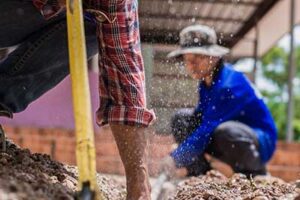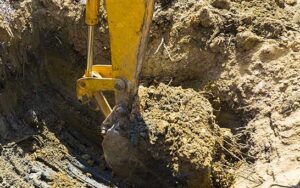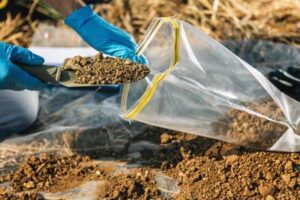Soil Testing
NexGen: Excellence in Soil Testing in Northern California

Types of Soil Testing
There are different types of California soil tests that NexGen can complete to check soil quality. The properties of the soil determine which type of test is the one that is done. Soil testing is done in the lab and in the field. Incidentally, a structure’s foundation design is determined by the results of the soil test report.
The five most common soil tests that NexGen does for new construction are as follows:
- Moisture Content
- Specific Gravity of Soil
- Compaction (The Proctor Test)
- Dry Density of Soil
- Atterberg Limits Testing
Moisture Content Test. When NexGen does moisture content soil testing in California, we are checking for the water content in the soil. This is important to know because if there’s too much or too little, the soil won’t support a structure properly.
There are numerous methods of determining water content in the soil, but the most common and accurate method of moisture content testing is the oven drying method. In this method, a soil sample is taken from the site, weighed, and placed in an oven. It is dried at 110°C. After 24 hours have passed, the soil is removed from the oven and then weighed. The difference in the weight after it has dried in the oven is then notated.

The most simple and common tests for specific gravity are the density bottle method and the Pycnometer method. We will look at the Pycnometer method here. The pycnometer is measured 4 times, each with a different weight variable. First is empty weight, then empty + dry soil weight, next, empty + dry soil + water, and finally, the Pycnometer filled with water. A mathematical formula using these four masses is used to compute gravity.
Compaction Soil Test (The Proctor Test). The Proctor test is done by NexGen to find out the compaction characteristics of soil. The amount of compaction is measured by dry soil density. Reducing the air voids in the soil by densification creates compaction.
For this soil test, the soil is sent through a large and a smaller sieve. The amounts that pass through and are retained on the small sieve are mixed in a specific proportion. Water is added to the mixture, and it is then left in an air-tight container for 20 hours. After the 20 hours is up, the soil is taken out, mixed, and then divided into parts. One of the parts of the soil is poured into a mold and pressure is applied to the soil sample. The soil sample and mold are weighed. A portion of the sample is taken and a water content test is conducted. The optimal moisture content is measured when the soil at its most dense state and it has achieved its maximum dry density.
Dry Density Test. The weight of the particles of soil in the given volume of a sample is known as the dry density of the soil. Specific gravity and void ratio affect dry density. Soil is classified as loose, medium-dense, and dense.
The method NexGen uses to determine dry density when doing soil testing is the core cutter method. It’s called that because a cylinder called a core cutter slices a sample, or core, out of the soil. The core cutter is then lifted up out of the soil with the sample still inside. The soil sample is then taken out of the core cutter and weighed. The water content is established through testing and dry density is calculated.
Atterberg Limits Testing. NexGen knows soil can be in four states: solid, semi-solid, liquid, and plastic. Which state the soil is in depends on the water content of the soil. A Swedish scientist, Albert Atterberg, defined limits of soil consistency in fine-grained soils. These methods are still used in determining liquid limit, plastic limit, and shrinkage limit of soil. These three limits determine the properties of fine-grained soils. In these three tests, the fine-grained soil is tested, and critical water content is measured.
- Liquid limit. A cup with a mechanism that moves up and down, known as a Casagrande’s liquid limit device, is used to discover the liquid limit of the soil.
- Plastic limit. A soil sample is taken, has water added to it, and develops plasticity. After the soil is made plastic, it is shaped into a ball and put onto a glass plate. The ball is rolled into small pieces that each measure a diameter of 3mm. If these pieces don’t break, the process is done again and again with less water each time, until the small pieces break, to determine the limits of plasticity in the soil sample.
- Shrinkage limit. This method of testing employs a mathematical formula to find out how much water is needed to fill all of the voids in the soil sample.
Soil testing in California is crucial to our clients’ projects; that’s why they rely on us. With NexGen’s almost 30 years in the construction industry, we’re applying innovative approaches to engineering. Our goal is our clients’ satisfaction, and we reach that with our experience and our commitment to quality work and safety practices.
Save 10% on All Septic Products
For All New Customers
"*" indicates required fields

